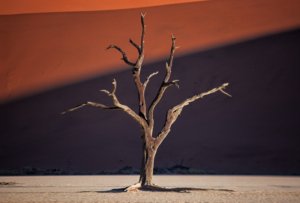Deadvlei Trees | Sossusvlei
Sossusvlei Clay Pan
Sossusvlei is located in the southern part of the Namib Desert, in the Namib-Naukluft National Park of Namibia. The name “Sossusvlei” is often used in an extended meaning to refer to the surrounding area, including other neighboring vleis such as Deadvlei and other high dunes in Namibia (Wikipedia).
Sossusvlei translates to “dead-end marsh”, as it is the place where the dunes come together preventing the Tsauchab River to flow any further, some 60km east of the Atlantic Ocean. However, due to the dry conditions in the Namib Desert the River seldom flows this far and the pan remains bone-dry most years. (Wikipedia)
Deadvlei | Ancient Acacia Trees
Deadvlei is another clay pan, about 2 km from Sossusvlei. A notable feature of Deadvlei is that it used to be an oasis with several acacia trees; afterward, the river that watered the oasis changed its course. The pan is thus punctuated by blackened, dead acacia trees, in vivid contrast to the shiny white of the salty floor of the pan and the intense orange of the dunes.
When the rivers dried out and the pan was cut from the nourishing moisture, the air became too dry for the trees to decompose. Blackened by the sun, the 10,000-year-old petrified acacia trees are one of the oldest trees on Earth.
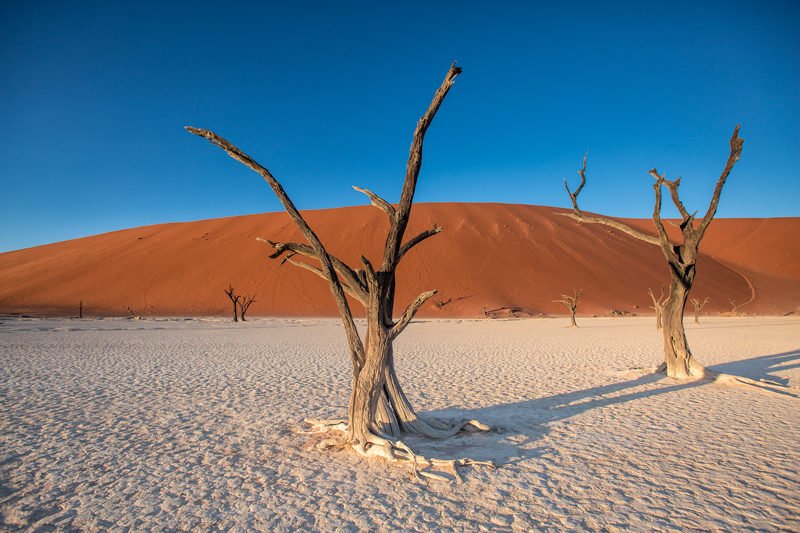

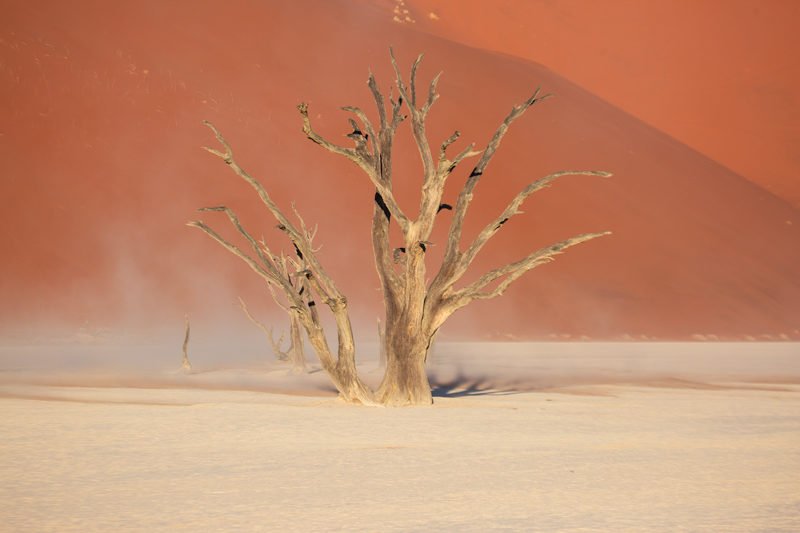
Oldest Desert and Highest Dunes
The dunes surrounding a large, white, salt and clay pan of Sossusvlei are some of the highest in the world. The highest reaching 300–400 meters (350m on average, named “Big Daddy” or “Crazy Dune”), which rest on a sandstone terrace.
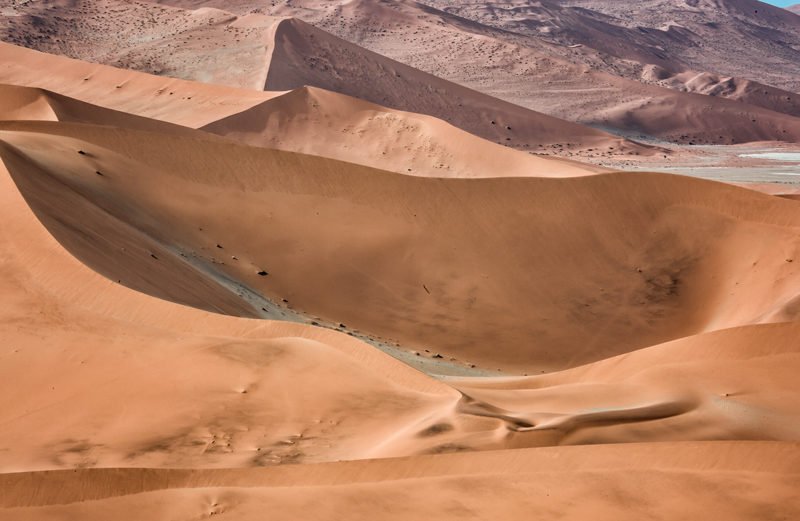
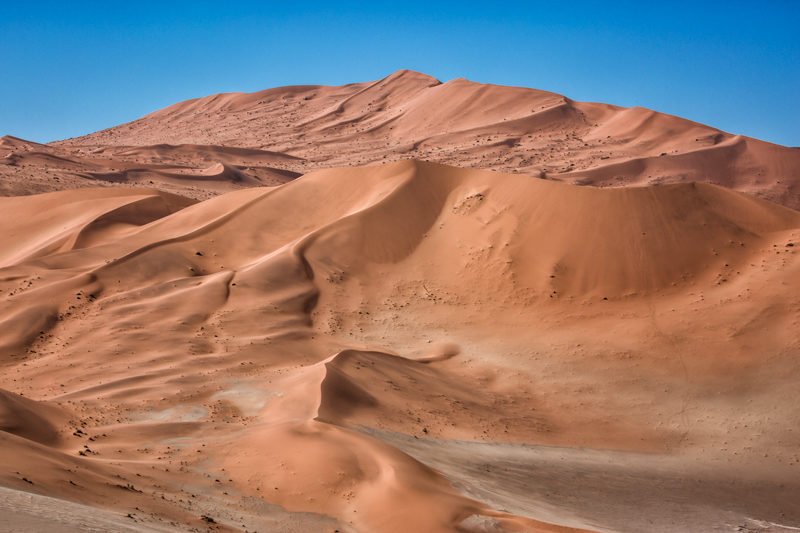
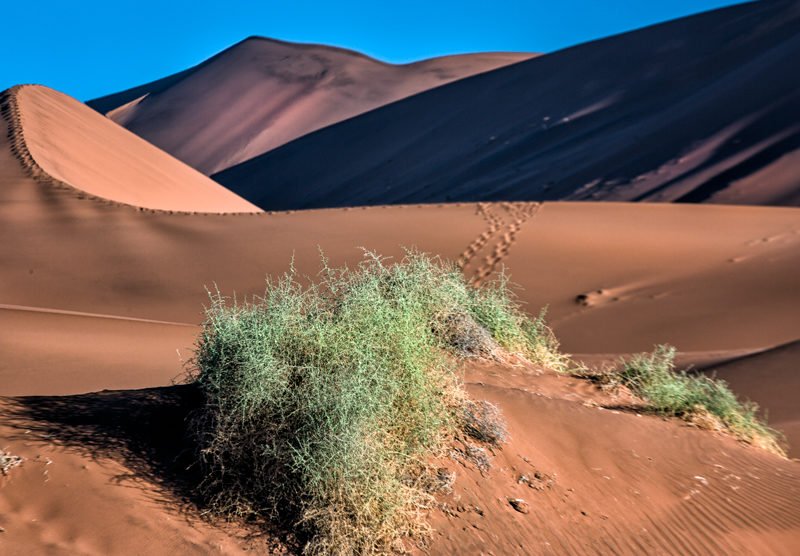
Sunrise and Sunset
Transformation of the dunes and the acacia trees is most pronounced with the rising and setting sun being cast over the Deadvlei clay pan.
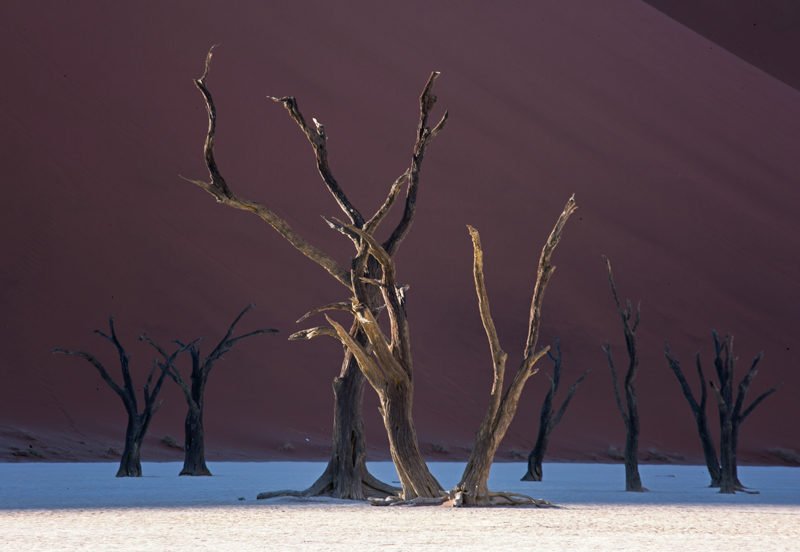
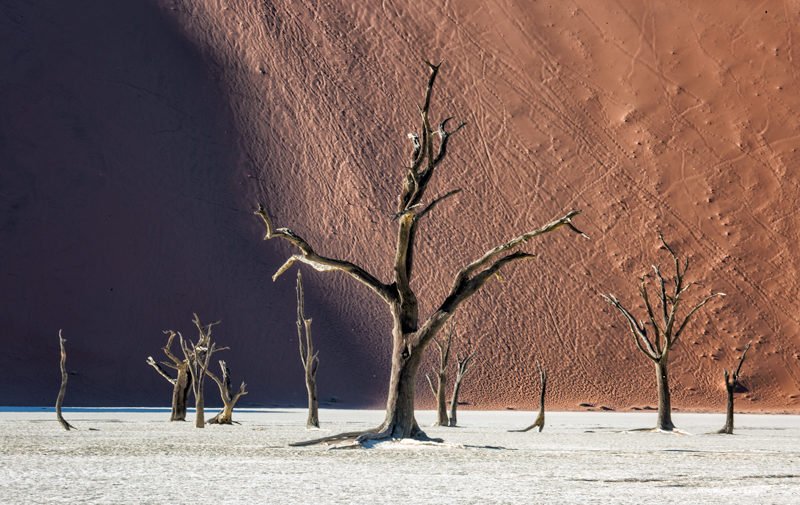
Memories

Links | Sources
https://en.wikipedia.org/wiki/Sossusvleihttps://en.wikipedia.org/wiki/Sossusvlei
https://en.wikipedia.org/wiki/Deadvlei
